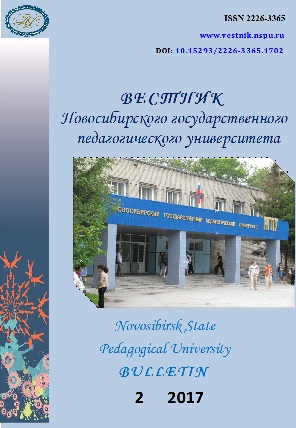Директивные аббревиатуры как компонент современной виртуальной коммуникации (на материале английского и немецкого языков)
Directive abbreviations as a component of modern virtual communication (as exemplified in English and German languages)
Author(s): Alexander Vladimirovich Alekseev, Anna Viktorovna LenetsSubject(s): Communication studies, Pragmatics, Eastern Slavic Languages
Published by: Новосибирский государственный педагогический университет
Keywords: Abbreviation; speech acts; directive abbreviations; virtual communication; reduced lexemes; information coding; texting;
Summary/Abstract: Introduction. The process of information coding, which is caused both technically and socially, has already become obligatory for modern virtual communication. The purpose of the article is to analyse the reasons and ways of directive lexical reductions use in the process of virtual communication. Materials and methods. The research is based on the illustrative examples of English and German abbreviations taken from Twitter and Facebook. The authors analyzed 1872 English and German lexical units relying on the method of continuous sampling it. Results. The use of abbreviations demonstrates the economy of the communicants’ speech efforts. In the present research the reduced lexical units are treated from the position of speech acts theory. The reduced lexemes are classified according to the following main classes: di-rective abbreviation, commissive abbreviation, declarative abbreviation, expressive abbreviation, assertive abbreviation and questetive abbreviation. The class of directive abbreviations in virtual communication and the process of texting, where an essential feature is the transformation of communicants’ interaction at the language level, are considered in detail. The authors emphasize the obliquity of directive abbreviations in virtual communication. The group of directive abbreviations is divided into such subclasses as preventive, requestive and regulatory abbreviations.The results of the research showed that participants frequently use regulatory abbreviations in virtual communication (in English and German). Frequent use of regulatory abbreviations by communicants is explained by their coding and obliquity. The high percentage of regulatory abbreviations is explained by the need of bilateral management of communication. Such prevalence of regulatory abbreviations in German-speaking virtual space is explained by national and cultural specifics of instructions (the bans and permissions) which regulate behavior of communicants in the German-speaking environment. Conclusion. In conclusion the authors state that texting is a special type of virtual communication where speech efforts of communicants are economized.
Journal: Вестник Новосибирского государственного педагогического университета
- Issue Year: 7/2017
- Issue No: 2
- Page Range: 98-110
- Page Count: 13
- Language: Russian

